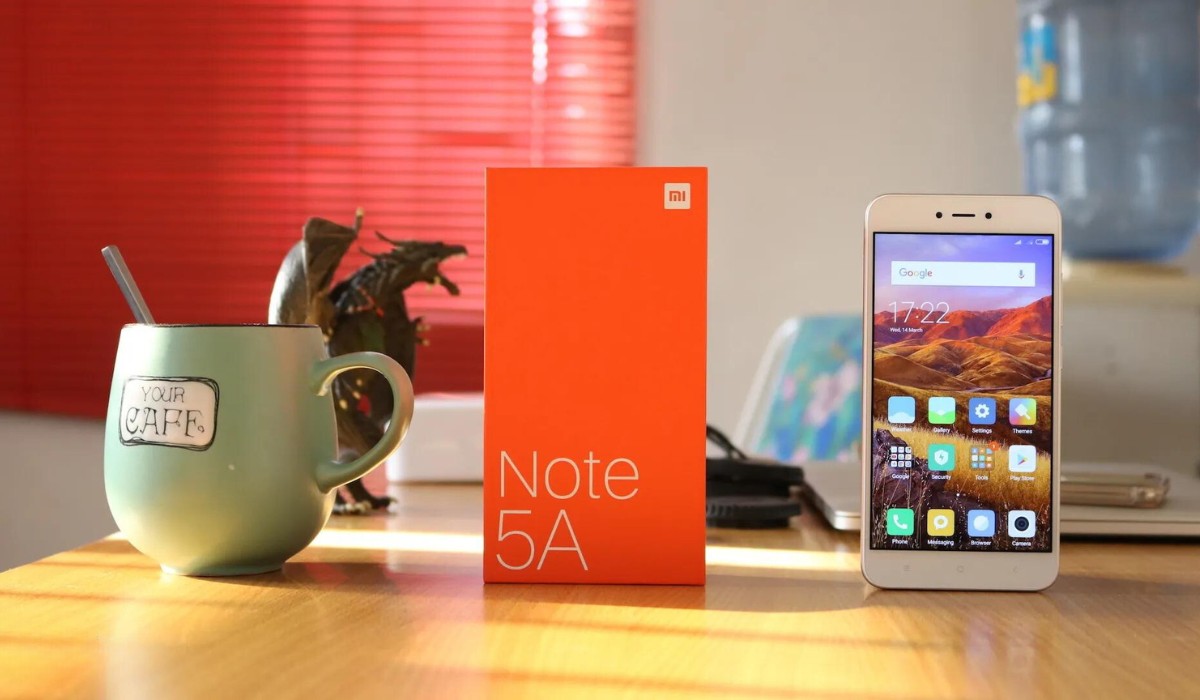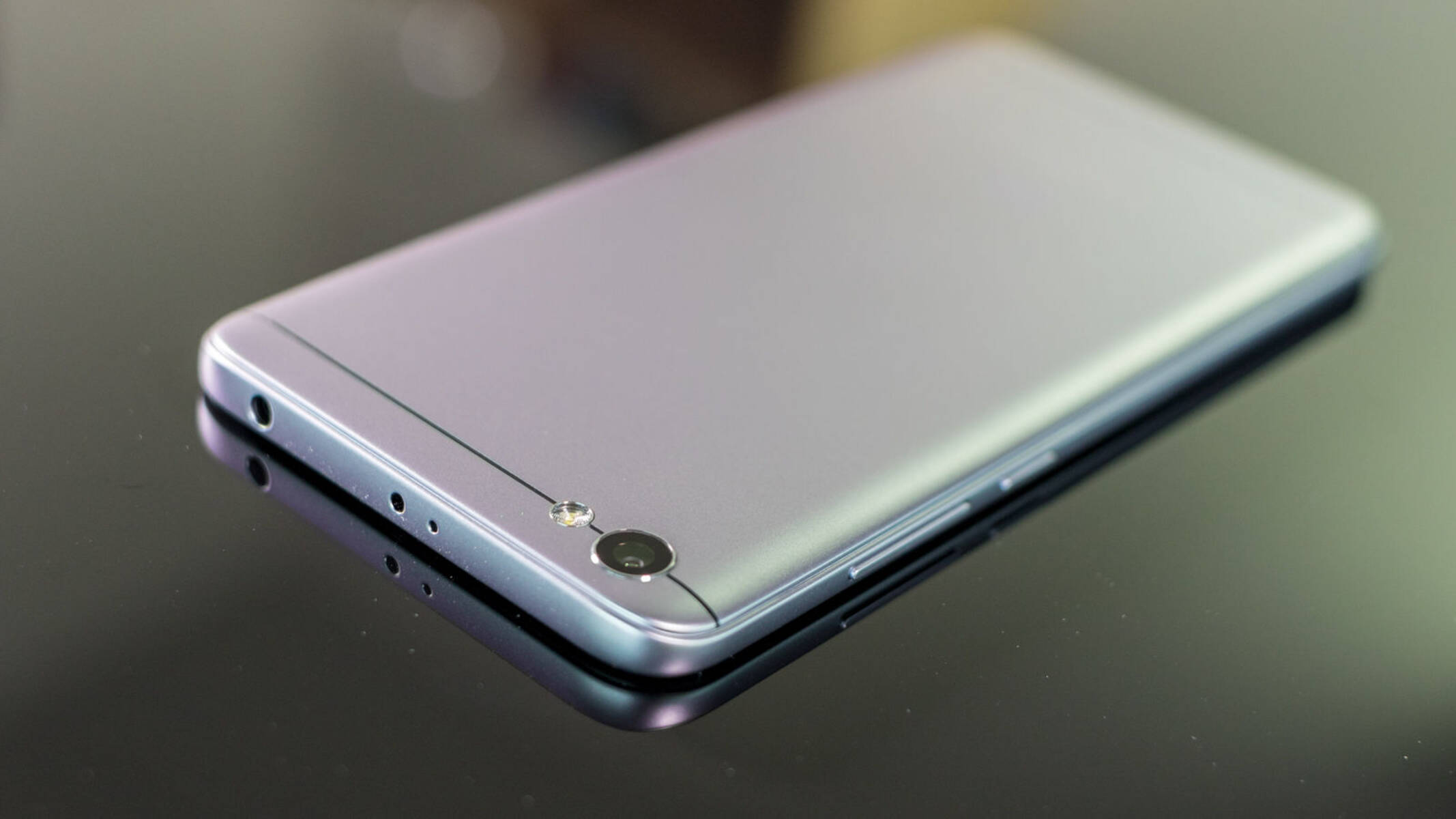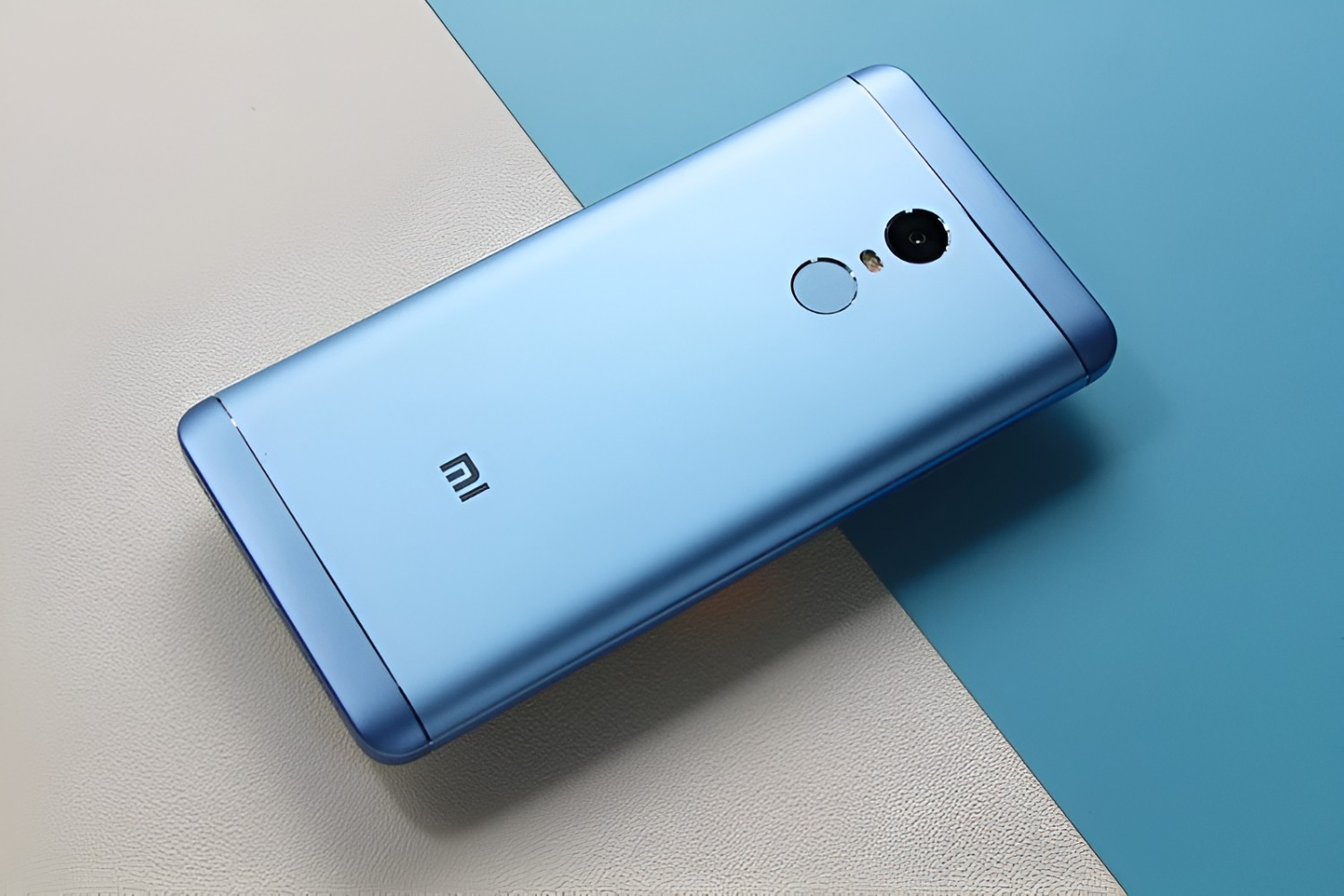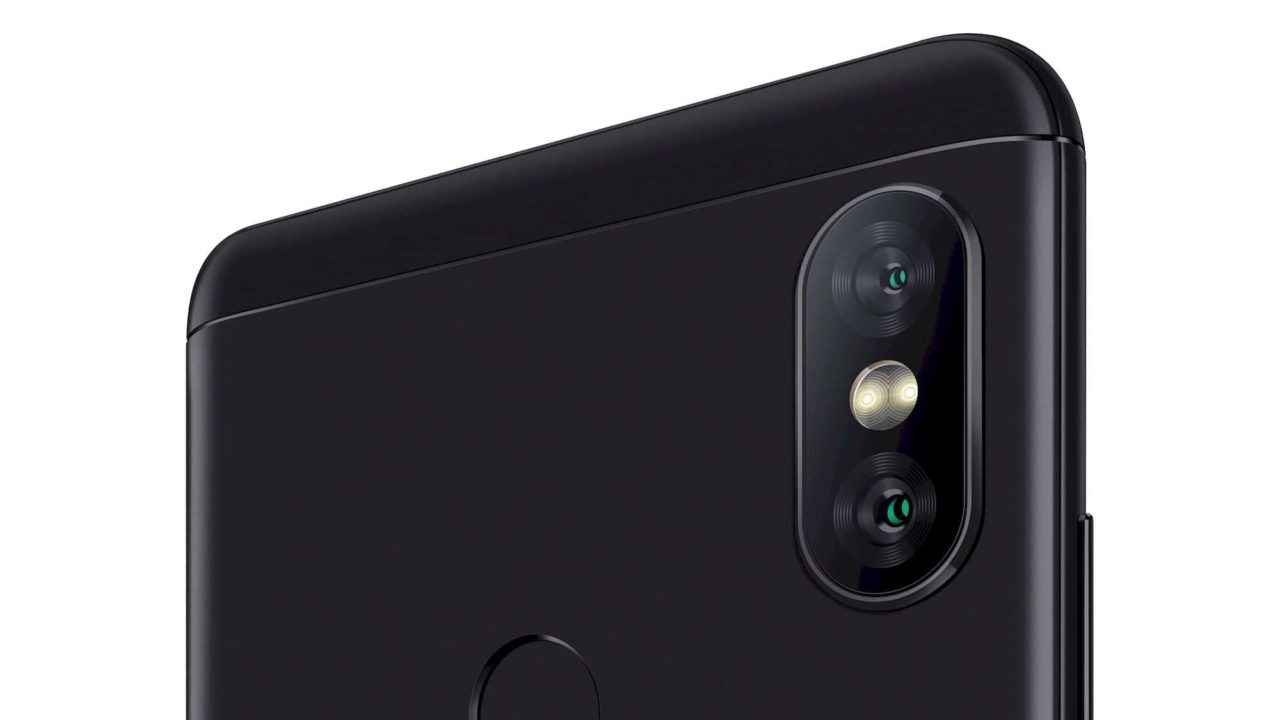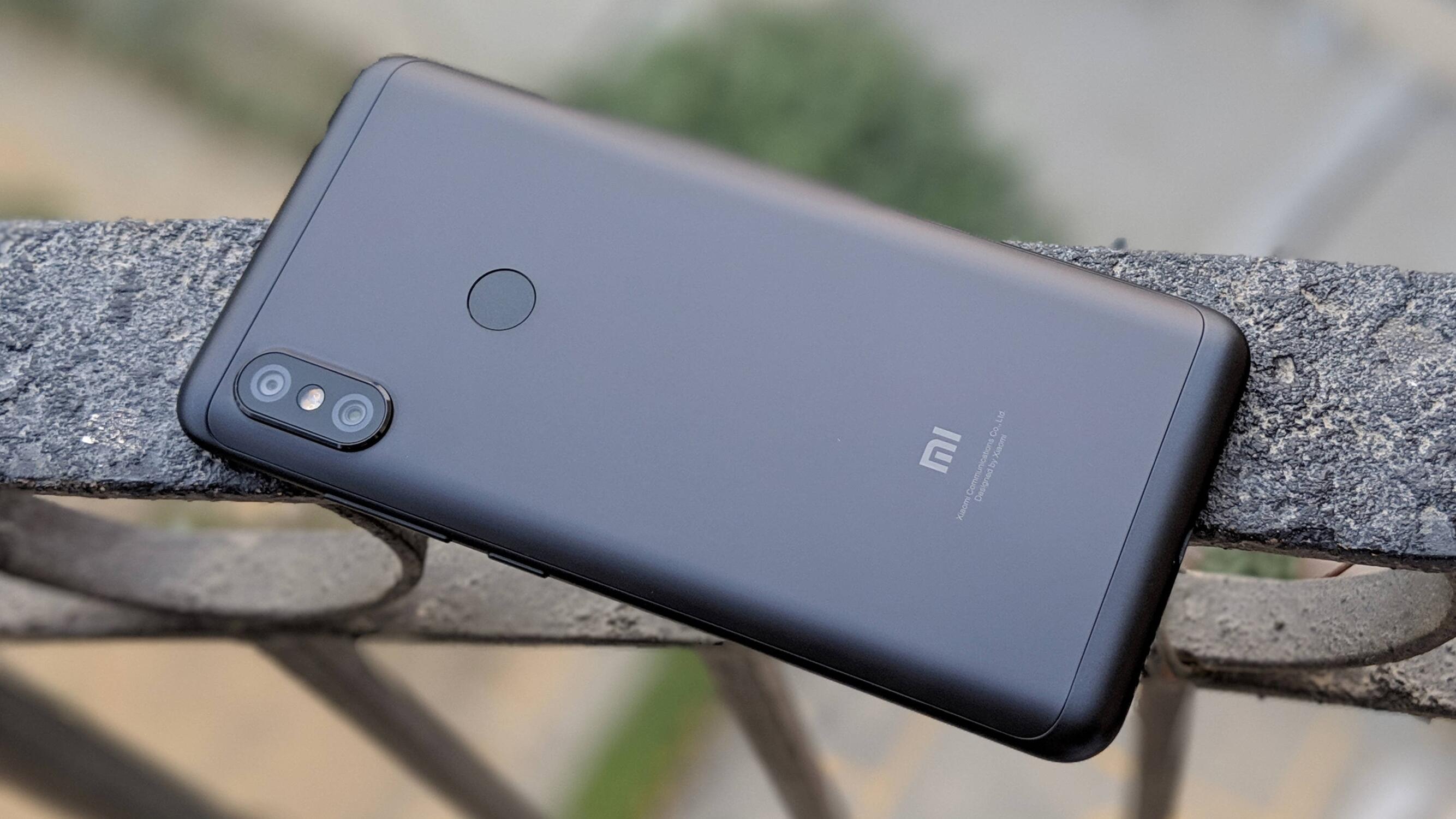Introduction
Welcome to the world of mobile device customization! If you're an avid Redmi 5A user with a passion for exploring the full potential of your device, you've come to the right place. Rooting your Redmi 5A opens up a realm of possibilities, allowing you to delve into advanced customization, optimize performance, and access a plethora of exciting features. This comprehensive guide is designed to walk you through the process of rooting your Redmi 5A, providing you with the knowledge and tools necessary to embark on this thrilling journey.
As you delve into the world of rooting, it's essential to understand the implications and benefits of this process. Rooting grants you elevated privileges, enabling you to modify system files, install custom ROMs, and utilize powerful apps that harness the full potential of your device. However, it's important to proceed with caution, as rooting involves certain risks and may void your device's warranty. By following this guide, you'll gain a deeper understanding of the rooting process and learn how to mitigate potential risks while maximizing the benefits.
Throughout this guide, we'll cover the essential steps required to root your Redmi 5A, including unlocking the bootloader, installing a custom recovery, and finally, gaining root access. Each step is accompanied by detailed instructions and insights to ensure a smooth and successful rooting experience. Additionally, we'll explore the concept of managing root access, empowering you to make informed decisions about the apps and permissions granted root privileges on your device.
By the end of this guide, you'll be equipped with the knowledge and confidence to embark on your rooting journey, unlocking the true potential of your Redmi 5A and experiencing the freedom to personalize your device according to your preferences. So, without further ado, let's dive into the fascinating world of rooting and unleash the full power of your Redmi 5A!
Understanding Rooting
Rooting a mobile device involves gaining privileged access to the Android operating system, essentially unlocking the full potential of the device. By default, Android devices are equipped with certain restrictions and limitations imposed by the manufacturer and carrier. These restrictions are in place to ensure the stability, security, and integrity of the device's operating system. However, for enthusiasts and advanced users, these limitations can be quite restrictive, hindering the ability to customize and optimize the device according to their preferences.
When a device is rooted, the user gains administrative access to the system files and settings, essentially becoming the "root" user with elevated privileges. This elevated access allows users to modify system files, uninstall pre-installed apps, install custom ROMs, and utilize powerful apps that require deep integration with the operating system. Rooting also enables users to overclock the device's CPU, enhance battery performance, and access features that are typically inaccessible on non-rooted devices.
It's important to note that rooting is a double-edged sword. While it offers unparalleled freedom and customization options, it also comes with certain risks and drawbacks. Rooting your device may void its warranty, expose it to security vulnerabilities if not managed properly, and potentially lead to the malfunctioning of the device if not executed correctly.
Furthermore, rooting requires a certain level of technical knowledge and understanding of the Android operating system. It's crucial to follow instructions carefully, use reputable tools, and stay informed about the potential implications of rooting your device.
In essence, rooting empowers users to break free from the constraints imposed by manufacturers and carriers, allowing them to tailor their devices to their specific needs and preferences. It's a gateway to a world of endless customization and optimization possibilities, but it's a journey that requires careful consideration, research, and a thorough understanding of the implications and responsibilities that come with gaining root access to your device.
Preparing Your Redmi 5A
Before embarking on the rooting process, it's crucial to prepare your Redmi 5A thoroughly. This involves taking several essential steps to ensure that your device is ready for the rooting procedure. Here's a detailed breakdown of the preparatory measures:
-
Backup Your Data: Prior to initiating the rooting process, it's imperative to back up all important data on your Redmi 5A. This includes contacts, photos, videos, documents, and any other files that hold significance to you. While the rooting process itself doesn't necessarily erase data, there's always a risk of data loss during advanced operations. By creating a comprehensive backup, you can safeguard your valuable information and restore it in the event of any unforeseen issues.
-
Charge Your Device: Ensure that your Redmi 5A is sufficiently charged before commencing the rooting process. A minimum battery level of 50% is recommended to prevent any interruptions during the procedure. A fully charged device minimizes the risk of sudden shutdowns, which could potentially disrupt the rooting process and lead to complications.
-
Enable USB Debugging: USB debugging is a crucial setting that allows your device to communicate with a computer via a USB connection. To enable USB debugging on your Redmi 5A, navigate to the device's "Settings," select "About Phone," and tap on the "Build Number" seven times to unlock developer options. Once developer options are unlocked, access the settings, select "Developer Options," and enable USB debugging.
-
Install Necessary Drivers: To ensure seamless communication between your Redmi 5A and the computer during the rooting process, it's essential to install the appropriate USB drivers. These drivers facilitate the transfer of data and commands between the device and the computer, enabling a smooth and stable connection.
By meticulously preparing your Redmi 5A through these essential steps, you'll lay a solid foundation for the subsequent stages of the rooting process. This proactive approach minimizes the likelihood of data loss, device malfunctions, and connectivity issues, setting the stage for a successful and hassle-free rooting experience.
Unlocking Bootloader
Unlocking the bootloader is a pivotal step in the process of rooting your Redmi 5A. The bootloader, a program that initializes the operating system when the device is powered on, is typically locked by manufacturers to prevent unauthorized system modifications. By unlocking the bootloader, you gain the ability to install custom recovery and ultimately achieve root access. Here's a detailed breakdown of the bootloader unlocking process for your Redmi 5A:
Step 1: Obtain Unlock Permission
Before proceeding with unlocking the bootloader, it's essential to obtain official permission from Xiaomi. This involves visiting the official Xiaomi website or using the dedicated Mi Unlock Tool to submit a bootloader unlock request. Once the request is submitted, it may take several days for Xiaomi to approve the request, during which time it's crucial to exercise patience.
Step 2: Enable Developer Options
To enable the developer options on your Redmi 5A, navigate to the device's "Settings," select "About Phone," and tap on the "Build Number" seven times. This action unlocks the developer options, granting you access to advanced settings and tools required for the bootloader unlocking process.
Step 3: Enable OEM Unlocking
After enabling developer options, access the settings, select "Developer Options," and enable the "OEM Unlocking" option. This step is crucial as it allows the bootloader to be unlocked using the official Mi Unlock Tool.
Step 4: Use Mi Unlock Tool
Once you've obtained official permission and enabled OEM unlocking, it's time to utilize the Mi Unlock Tool to unlock the bootloader. This involves connecting your Redmi 5A to a computer, launching the Mi Unlock Tool, and following the on-screen instructions to initiate the bootloader unlocking process. It's important to carefully adhere to the tool's guidelines and warnings to ensure a smooth and successful unlocking procedure.
Step 5: Wait for the Unlocking Process
After initiating the bootloader unlocking process, it's essential to wait patiently as the tool carries out the necessary operations. The device may reboot several times during this process, and it's crucial to refrain from interrupting the procedure to prevent potential complications.
By meticulously following these steps, you'll successfully unlock the bootloader of your Redmi 5A, laying the groundwork for the subsequent stages of the rooting process. This pivotal achievement brings you one step closer to harnessing the full potential of your device and embarking on a journey of advanced customization and optimization.
Installing Custom Recovery
Installing a custom recovery is a crucial step in the process of rooting your Redmi 5A, as it empowers you to perform advanced system operations, create full device backups, and install custom ROMs. Custom recoveries such as TWRP (Team Win Recovery Project) provide a user-friendly interface and a wide array of powerful features that are essential for the rooting process and subsequent customization endeavors.
Here's a detailed breakdown of the process of installing a custom recovery on your Redmi 5A:
Step 1: Download the Custom Recovery Image
Begin by obtaining the appropriate custom recovery image for your Redmi 5A. It's essential to ensure that the custom recovery image is specifically designed for your device model to avoid compatibility issues. The official website of the custom recovery project typically provides a repository of supported devices and corresponding recovery images.
Step 2: Enable USB Debugging
Similar to the preparatory measures for unlocking the bootloader, it's crucial to enable USB debugging on your Redmi 5A. This setting allows your device to communicate with a computer via a USB connection, facilitating the transfer of files and commands during the custom recovery installation process.
Step 3: Connect Your Device to the Computer
Using a USB cable, establish a stable connection between your Redmi 5A and the computer. This connection is essential for transferring the custom recovery image to your device and executing the installation process.
Step 4: Transfer the Recovery Image
Once the connection is established, transfer the custom recovery image file to the root directory of your device's internal storage. Placing the file in the root directory simplifies the process of locating and selecting the recovery image during the installation phase.
Step 5: Boot Into Fastboot Mode
Reboot your Redmi 5A into fastboot mode, which allows for low-level interactions with the device's hardware. This can typically be achieved by powering off the device and then booting it into fastboot mode using a specific key combination or by issuing a command from a connected computer.
Step 6: Install the Custom Recovery Image
Using the appropriate commands or tools, flash the custom recovery image onto your Redmi 5A while it's in fastboot mode. This process involves executing commands from a connected computer to install the custom recovery, replacing the stock recovery with the custom recovery image.
By meticulously following these steps, you'll successfully install a custom recovery on your Redmi 5A, paving the way for the final stage of the rooting process. The custom recovery serves as a powerful tool that empowers you to take full control of your device, enabling advanced system modifications and customization options that transcend the limitations of the stock recovery.
Rooting Your Redmi 5A
Rooting your Redmi 5A is the culmination of a transformative journey, unlocking the full potential of your device and granting you unprecedented control over its functionality and customization. This pivotal step empowers you to delve into advanced system modifications, install powerful root-enabled apps, and unleash the true capabilities of your device. Here's a comprehensive guide to rooting your Redmi 5A, ensuring a seamless and successful process.
Step 1: Verify Custom Recovery Installation
Before proceeding with the rooting process, it's essential to verify that the custom recovery, such as TWRP, has been successfully installed on your Redmi 5A. Custom recoveries provide a secure environment for executing advanced operations and are a prerequisite for the rooting process.
Step 2: Download the Necessary Files
Obtain the essential files required for rooting your Redmi 5A, including the latest version of the Magisk or SuperSU rooting package. These packages facilitate the rooting process and provide the necessary tools for managing root access on your device.
Step 3: Transfer the Rooting Package
Connect your Redmi 5A to the computer and transfer the downloaded rooting package to the device's internal storage. Placing the package in the root directory simplifies the process of locating and selecting it during the custom recovery session.
Step 4: Boot Into Custom Recovery
Reboot your Redmi 5A into custom recovery mode, typically achieved by powering off the device and then booting into recovery mode using a specific key combination. Once in custom recovery, navigate to the location where the rooting package is stored.
Step 5: Flash the Rooting Package
Using the custom recovery interface, select the rooting package from the device's internal storage and initiate the flashing process. This action installs the rooting package, granting root access to your Redmi 5A and paving the way for advanced customization and optimization.
Step 6: Reboot and Verify Root Access
After flashing the rooting package, reboot your Redmi 5A. Upon reboot, you can verify the successful rooting of your device by checking for the presence of root-enabled apps and using root-specific functionality.
By meticulously following these steps, you'll successfully root your Redmi 5A, unlocking a world of possibilities and customization options. Root access empowers you to tailor your device to your preferences, optimize performance, and explore a vast ecosystem of root-enabled apps and features. Embrace the newfound freedom and control that rooting brings, and embark on a journey of personalized and enhanced mobile device experiences.
Managing Root Access
After successfully rooting your Redmi 5A, it's essential to understand the nuances of managing root access to ensure the optimal performance, security, and stability of your device. Root access grants elevated privileges, allowing you to make profound system-level changes and grant specific apps the ability to access and modify critical system files. However, with great power comes great responsibility, and managing root access requires a thoughtful and cautious approach.
One of the key aspects of managing root access is exercising discretion when granting root privileges to apps. While root-enabled apps can unlock powerful features and functionalities, they also pose potential security risks if not carefully vetted. It's crucial to evaluate the trustworthiness and necessity of each app requesting root access, ensuring that only reputable and essential apps are granted such elevated privileges. By exercising discernment in this regard, you can mitigate the risk of malicious apps exploiting root access and compromising the security of your device.
Furthermore, staying informed about the implications of granting root access to specific apps is paramount. Some apps may request root privileges for legitimate purposes, such as system-level optimizations or advanced functionality, while others may seek root access for dubious reasons. Understanding the intentions behind an app's request for root privileges empowers you to make informed decisions about whether to grant or deny such access, safeguarding the integrity of your device and personal data.
Regularly reviewing and auditing the apps with root access is another crucial aspect of managing root privileges. As your device evolves and new apps are installed, it's important to periodically reassess which apps have been granted root access and whether such access is still warranted. Revoking root privileges from apps that are no longer essential or trusted helps maintain a lean and secure root environment, reducing the potential attack surface and enhancing the overall stability of your device.
In essence, managing root access is a continuous process that demands vigilance, discernment, and a proactive approach to maintaining the security and performance of your rooted Redmi 5A. By carefully evaluating app requests, staying informed about the implications of root access, and regularly auditing root privileges, you can harness the full potential of root access while safeguarding the integrity of your device and personal data.
Conclusion
In conclusion, the journey of rooting your Redmi 5A is a transformative experience that opens the door to a realm of unparalleled customization, optimization, and control over your device. By delving into the process of unlocking the bootloader, installing a custom recovery, and ultimately gaining root access, you've embarked on a path that empowers you to tailor your device to your unique preferences and explore a world of advanced features and functionalities.
Rooting your Redmi 5A represents a significant milestone, marking the transition from a standard user to an enthusiast with the ability to harness the full potential of the Android operating system. With root access, you have the freedom to explore custom ROMs, optimize performance, and utilize powerful root-enabled apps that transcend the limitations of non-rooted devices. This newfound freedom allows you to personalize your device in ways that were previously inaccessible, creating a truly unique and tailored mobile experience.
However, it's important to approach rooting with a sense of responsibility and awareness of the potential implications. Rooting your device may void its warranty and expose it to security risks if not managed carefully. Therefore, it's crucial to stay informed about the best practices for managing root access, exercising discretion when granting root privileges to apps, and regularly auditing the apps with root access to maintain a secure and stable environment.
As you continue to explore the possibilities unlocked by rooting your Redmi 5A, remember that the journey doesn't end with gaining root access. It's an ongoing process of learning, experimenting, and fine-tuning your device to align with your evolving preferences and needs. Embrace the freedom and control that rooting brings, while also recognizing the responsibility that comes with it.
Ultimately, the decision to root your Redmi 5A represents a commitment to personalization, optimization, and the pursuit of a truly tailored mobile experience. By following this comprehensive guide and embracing the principles of responsible root management, you've embarked on a journey that promises to elevate your device to new heights of performance, functionality, and personalization.









